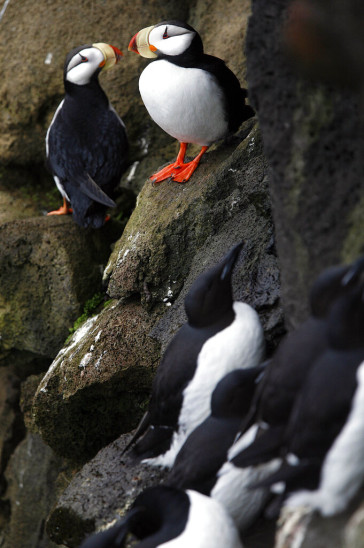In many places around the world, the sight of a rat would not attract much attention. However, it caused an uproar on the island of St. Paul of the Pribilof Islands
On an island of windswept tundra in the Bering Sea, hundreds of miles from central Alaska, a resident, while sitting outside his house saw – is it true?, did he really see it? – Well, he’s pretty sure he did.
A rat.
And what?
In many places around the world, the reported sighting of a rat would not attract much attention. However, it caused an uproar on the island of St. Paul, which is part of the Pribilof Islands sometimes called the “Galapagos of the North,” according to The Associated Press.
That’s because ship-boarding rats can quickly inhabit and overrun remote islands, decimating bird populations by eating eggs, chicks or even adults and upsetting once-vibrant ecosystems.
Armed with peanut butter in search of the rat
Shortly after receiving the resident’s report in June, wildlife officers arrived at the apartment complex and crawled through the grass, around the building and under the porch, looking for tracks, chew marks or droppings. They baited traps with peanut butter and set up cameras to capture any confirmation of the rat’s existence – but so far they have found no evidence.
“We know – because we’ve seen this on other islands and in other locations in Alaska and around the world – that rats are absolutely decimating seabird colonies, so the threat is not a simple one for the local community,” said Lauren Divine , director of the Aleut community of the St. Island Ecosystem Conservation Office. Paul.
Rat Island
The stress on the island of St. Paul is the latest development amid long-running efforts to remove or eradicate non-native rats from some of the most remote but ecologically diverse islands in Alaska and around the world.
The rodents have been successfully removed from hundreds of islands around the world — including one in Alaska’s Aleutian chain formerly known as “Rat Island,” according to the U.S. Fish and Wildlife Service. But such efforts can take years and cost millions of dollars, so prevention is considered the best defense.
The ghost rat
Around the developed areas of St. Paul, officials have placed wax blocks designed to record any telltale bites. Some of the blocks are made with ultraviolet material, which allows inspectors armed with black lights to look for glowing feces.
They also asked residents to be on the lookout for any rodents and are seeking permission from the US Department of Agriculture to bring a dog to the island to sniff out any rats. Dogs are otherwise banned from the Pribilofs to protect the seals.
There have been no signs of rats since the reported sighting this summer, but the hunt and heightened state of vigilance is likely to persist for months.
Divine likened the search to trying to find a needle in a haystack “and not knowing if there’s even a needle.”
The community of about 350 people — clustered on the southern tip of an island characterized by rolling hills, surrounded by cliffs and storm surges — has long had a rodent surveillance program that includes rat traps near the airport and in developed waterfront areas where boats arrive, designed to detect or kill any rats that may appear.
However, it took almost a year for the last known rat to be caught in St. Paul, who is believed to have jumped from a truck. He was found dead in 2019. That underscores why even an unsubstantiated sighting is taken so seriously, Divine said.
By eradicating rats, researchers have found that native birds are benefiting, and have even found additional species thought to have been wiped out by rats. The island is once again known by the name originally given by the Unangan people of Aleutian descent: Hawadax. The researchers found tufted puffins digging burrows on cliff edges and defenseless against rats, as well as eagle and hawk nests.
Source: Skai
I have worked as a journalist for over 10 years, and my work has been featured on many different news websites. I am also an author, and my work has been published in several books. I specialize in opinion writing, and I often write about current events and controversial topics. I am a very well-rounded writer, and I have a lot of experience in different areas of journalism. I am a very hard worker, and I am always willing to put in the extra effort to get the job done.











